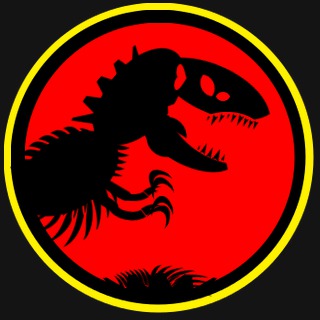Fifty years ago, Gene Roddenberry’s first “wagon train to the stars” began airing on NBC. Star Trek featured a cast of many nationalities, had people of color in important roles, it commented on the social problems of the day disguised in science fiction, and it was the first time we’d seen humanity out in the stars in a ship meant to not only get us to them, but to explore. It was a show about hope for the future, a future that we continue to ape from today with our cellphones, video conferencing communications, and even equipment you can carry around that will tell you the current and future weather conditions.
Was Star Trek perfect? No. Between all the series that they put out from the ’60s, to the reintroduction of the show again with Next Generation in the ’80s, and up through Star Trek Enterprise, there were some episodes that didn’t work, weren’t necessarily poignant, and some that were just not good sci-fi. I’ve seen a number of articles out there listing the great episodes. There are several guides on how to get through the shows as quickly as possible so you get the most for your streaming buck. These guides don’t necessarily go into much detail, though. They list them, but they don’t rate them or give you much info on them. Star Trek Essentials aims to be a little different. I’m going to go over two episodes twice a week, review them, and talk about what makes them special.
Season 3 continues on with this set of essentials. Survivors of a planet that’s been hyper-accelerated try to hijack the ship and crew for breeding purposes. Then Trek tries again to tackle the idea of racism in a pretty blatant way with two men who hate each other trying to take over the ship.
As a note, I’m not going with broadcast order on these, but rather production order, although for simplicity’s sake I’ve got the episode number as they appear on Netflix for those that want to watch these.
Wink of an Eye (Season 3, Episode 11)
Responding to a distress call on Scalos, the planet the Enterprise finds seems to be entirely deserted. When a crewman vanishes, the crew tries to figure out what’s going on. The ship starts to seem to have odd malfunctions, but when an alien device is found and the ship realizes it’s being taken over, Kirk ends up vanishing as well. Kirk finds out that the people of Scalos have been hyper-accelerated to the point where the rest of the crew can’t see them and they want them for breeding purposes as they’ve become sterile. It’s up to Kirk to alert a crew that can’t see or hear him to the danger they’re all in.
This is another mixed episode for me. I really like the premise, and some of the slowed down effects look great. The episode does move along pretty well, though, and it’s good enough to keep me interested throughout. This would also set up a few other episodes in later Trek shows where some of the crew would end up becoming invisible to the others, so in that regard it’s kind of the first of these style of episodes. Like Day of the Dove, it’s not necessarily an amazing episode, but it hits enough of the right moments to work.
![]()
Let That Be Your Last Battlefield (Season 3, Episode 15)
On a decontamination mission to the planet Ariannus, the Enterprise finds a shuttle that had been stolen from Starbase 4, with life support failing. They bring it aboard and find an unusual pilot, the left side of his face white, and black on the other. When revived we find out he’s Lokai from Cheron. When Commissioner Bele boards the ship informing them he’s been pursuing Lokai, we find out they are very long living and powerful. Bele is from the ruling order, black on the left and white on the right. Lokai’s people are slaves to the ruling class, and the two end up fighting while Bele tries to take over the Enterprise to take his prisoner to Cheron.
Making a political statement about racism in the politically charged ’60s, and hell, even now, was a big risk, but masking it as a sci-fi story seemed to smooth it over a bit. Plus, it has Frank Gorshin in it, who I knew as the Riddler in the Batman ’66 show. There’s a lot in here about personal hatred and vengeance as well. While a few scenes kind of fall flat, overall this does a lot of the things I like about the original series. We also get the destruct sequence that gets re-used again in Star Trek III.
![]()

Born the same year as Star Wars, it seems Ashe was destined to be into films with big impacts, explosions, and laser swords. With a love for sci-fi and horror, Ashe has a thing for games of both the tabletop and video variety. He is living a charmed, married life of sixteen years, along with several cats, a dog, and a bearded dragon. Ashe currently writes for Diehard Gamefan, covering video and tabletop games since 2008. Starting with Cinefessions just a few years ago, he has decided to tackle one of his original passions: film.


